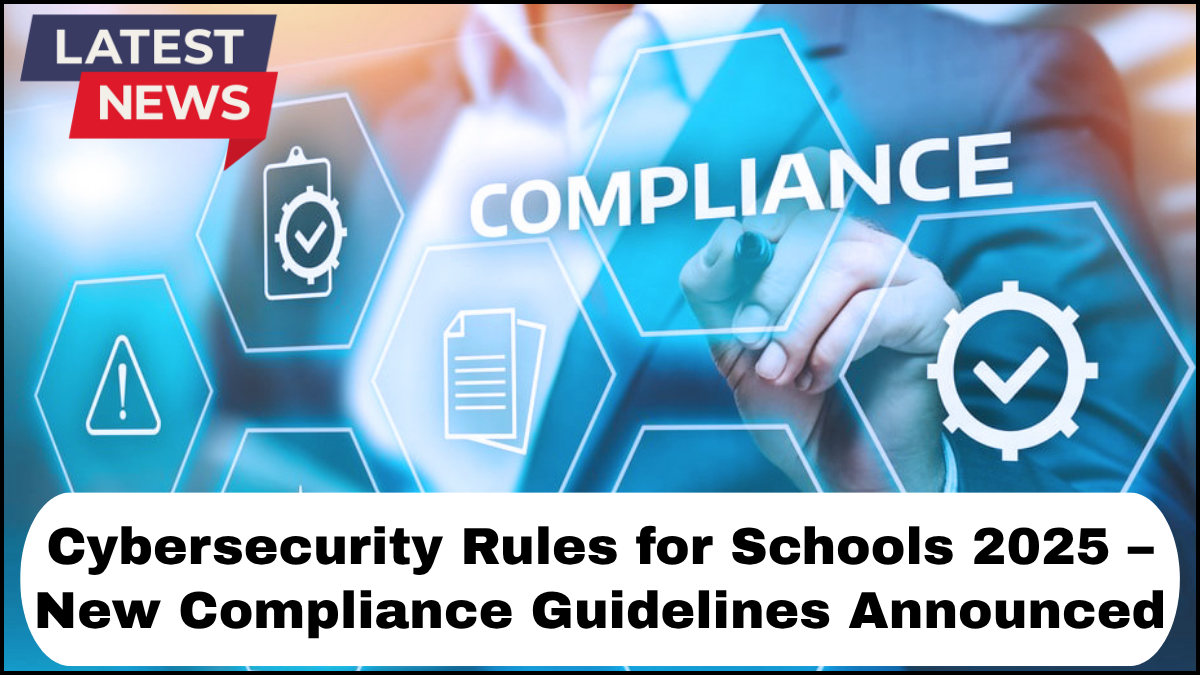In response to the growing threat of cyberattacks targeting educational institutions, the government has rolled out the Cybersecurity Guidelines 2025—a comprehensive framework aimed at strengthening digital defenses across schools and districts. These new mandates are not optional. Every public and private K–12 institution must align with the updated standards to ensure safe, secure handling of student and staff data.
The guidelines emphasize data integrity, access control, staff training, and incident response. This shift marks the most significant update in school data protection rules in over a decade.

Why the Cybersecurity Guidelines 2025 Matter Now
With cybercriminals increasingly targeting educational networks, schools have become a primary focus for ransomware, phishing, and data theft. In 2024 alone, over 1,200 school districts reported data breaches, many involving sensitive personal information of minors. The Cybersecurity Guidelines 2025 aim to plug the vulnerabilities that made those attacks possible.
These rules are designed not just to safeguard information, but to establish a culture of cyber resilience across educational ecosystems—from administrators to students.
Key Components of the Cybersecurity Guidelines 2025
The new compliance rules cover several core domains. Here’s what schools must implement to remain compliant:
1. Mandatory Risk Assessments
Schools are now required to conduct annual cybersecurity risk assessments. These evaluations must identify weaknesses in systems, software, and procedures. Reports must be documented and retained for audit purposes.
2. Multi-Factor Authentication (MFA)
To combat unauthorized access, all administrative accounts and staff email systems must implement multi-factor authentication by mid-2025. MFA is now a non-negotiable standard in the updated school data protection rules.
3. Centralized Incident Response Plans
Every institution must draft and maintain a detailed cybersecurity incident response plan. This includes outlining responsibilities, communication protocols, recovery strategies, and legal obligations. Staff must be trained to execute the plan efficiently under pressure.
4. Data Encryption Requirements
Sensitive student and staff data must be encrypted—both in transit and at rest. This includes report cards, disciplinary records, medical information, and any personally identifiable information (PII). The guidelines mandate 256-bit encryption or higher.
5. Staff Cybersecurity Training
Cyber hygiene training is now mandatory for all school employees. At least twice a year, staff must complete certified training that covers topics such as phishing awareness, password management, and data handling.
6. Third-Party Vendor Compliance
Vendors that process, store, or transmit school data must also meet the Cybersecurity Guidelines 2025. Schools are held accountable for ensuring vendor compliance. Contracts must include clear cybersecurity obligations and breach notification clauses.
Timeline and Enforcement
The rollout of the guidelines follows a phased timeline:
-
Q1 2025 – Risk assessment templates and reporting tools released
-
Q2 2025 – MFA implementation deadline
-
Q3 2025 – Encryption standards and vendor compliance audits begin
-
Q4 2025 – Full compliance required; non-compliant schools risk federal funding penalties
The Department of Education will oversee audits, with assistance from the Cybersecurity and Infrastructure Security Agency (CISA). Institutions failing to comply may face investigations, fines, and loss of access to federal technology grants.
How Schools Can Prepare for Compliance
To navigate the transition smoothly, school leaders should:
-
Appoint a cybersecurity coordinator to manage compliance tasks
-
Update acceptable use policies for students and staff
-
Perform a current-state IT audit to benchmark readiness
-
Invest in secure infrastructure like firewalls and endpoint protection
-
Partner with cybersecurity consultants for implementation support
Proactive preparation now will prevent costly breaches—and keep schools eligible for funding and operational continuity.
The Long-Term Impact of School Data Protection Rules
The Cybersecurity Guidelines 2025 go beyond compliance. They set the foundation for a more secure and future-proof learning environment. As education becomes increasingly digital, securing school networks isn’t just about IT—it’s about student safety, privacy rights, and institutional trust.
For parents, it means peace of mind. For educators, it means less downtime and fewer disruptions. For students, it ensures a safe digital classroom where learning can thrive uninterrupted.
FAQs
Q1: Are private schools required to follow the Cybersecurity Guidelines 2025?
Yes. Both public and private K–12 institutions must comply. The rules apply to any school that stores, transmits, or processes student data.
Q2: What happens if a school doesn’t meet the new guidelines by the deadline?
Non-compliant schools may lose eligibility for federal technology grants and could face penalties, including public disclosure of violations.
Q3: Do these guidelines apply to higher education institutions?
No. These specific guidelines are designed for K–12 schools. Colleges and universities follow separate federal cybersecurity regulations.
Q4: How can parents know if their child’s school is compliant?
Schools are encouraged to publish cybersecurity compliance statements and updates as part of their transparency policy. Parents can also ask school administrators directly.
Q5: Are cloud services used by schools covered under these rules?
Yes. Any third-party cloud provider used to store or manage school data must comply with the school data protection rules outlined in the 2025 guidelines.
click here to learn more